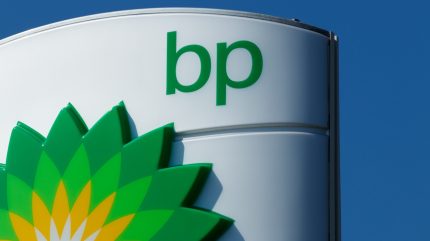
BP has revealed that the floating production storage and offloading (FPSO) vessel needed for the continued development of the Greater Tortue Ahmeyim (GTA) project has been delivered to the maritime border of Mauritania and Senegal.
The vessel, which the British energy giant called a “key component of the GTA Phase 1 LNG development”, is now at its final location, moored 40km offshore in a water depth of 120m.

Discover B2B Marketing That Performs
Combine business intelligence and editorial excellence to reach engaged professionals across 36 leading media platforms.
Built at China’s COSCO Qidong shipyard, the boat will serve the LNG project, which is expected to produce 2.3 million tonnes per annum in the first phase of development, said a statement from BP.
“BP is investing in today’s energy system, and tomorrow’s too, and GTA Phase 1 represents this investment in action,” said Dave Campbell, BP’s senior vice-president, Mauritania and Senegal, in a statement.
He added that this is a “huge landmark step for the project”, a development “leading the way in unlocking gas resources for Mauritania and Senegal”.
It will be operated by BP on behalf of the project’s partners, namely BP, Societe des Petroles du Senegal, Societe Mauritanienne des Hydrocarbures and Kosmos Energy, with BP as the operator.

US Tariffs are shifting - will you react or anticipate?
Don’t let policy changes catch you off guard. Stay proactive with real-time data and expert analysis.
By GlobalDataThe two west African nations signed an inter-government cooperation agreement in February 2018, which provided for the development of the cross-border gas project with each country equally sharing resources and revenues.
The GTA field is spread across the C-8 block offshore Mauritania and the Saint-Louis Profond offshore block in Senegal. The field is located 120km offshore at a water depth of 2,850m.
The project is estimated to contain up to 15 trillion cubic feet of recoverable gas resources.
The FPSO – ten-storeys in height – will have a crew of around 140 people on board during normal operation.
It is expected to process more than 500 million standard cubic feet of gas per day, removing water, condensate and impurities from the gas before transferring it via pipeline to the floating liquified natural gas vessel at the hub terminal 10km offshore.
The extracted gas will them be transferred to LNG carriers for export, with an unspecified amount allocated to help meet growing energy demand in the two host countries.
Mauritania and Senegal began oil and gas production in 2006 and 2002, respectively, but only on a relatively small scale.
However, the offshore LNG project will likely form the base of their gas production for years as both nations seek to develop their hydrocarbon sector.





